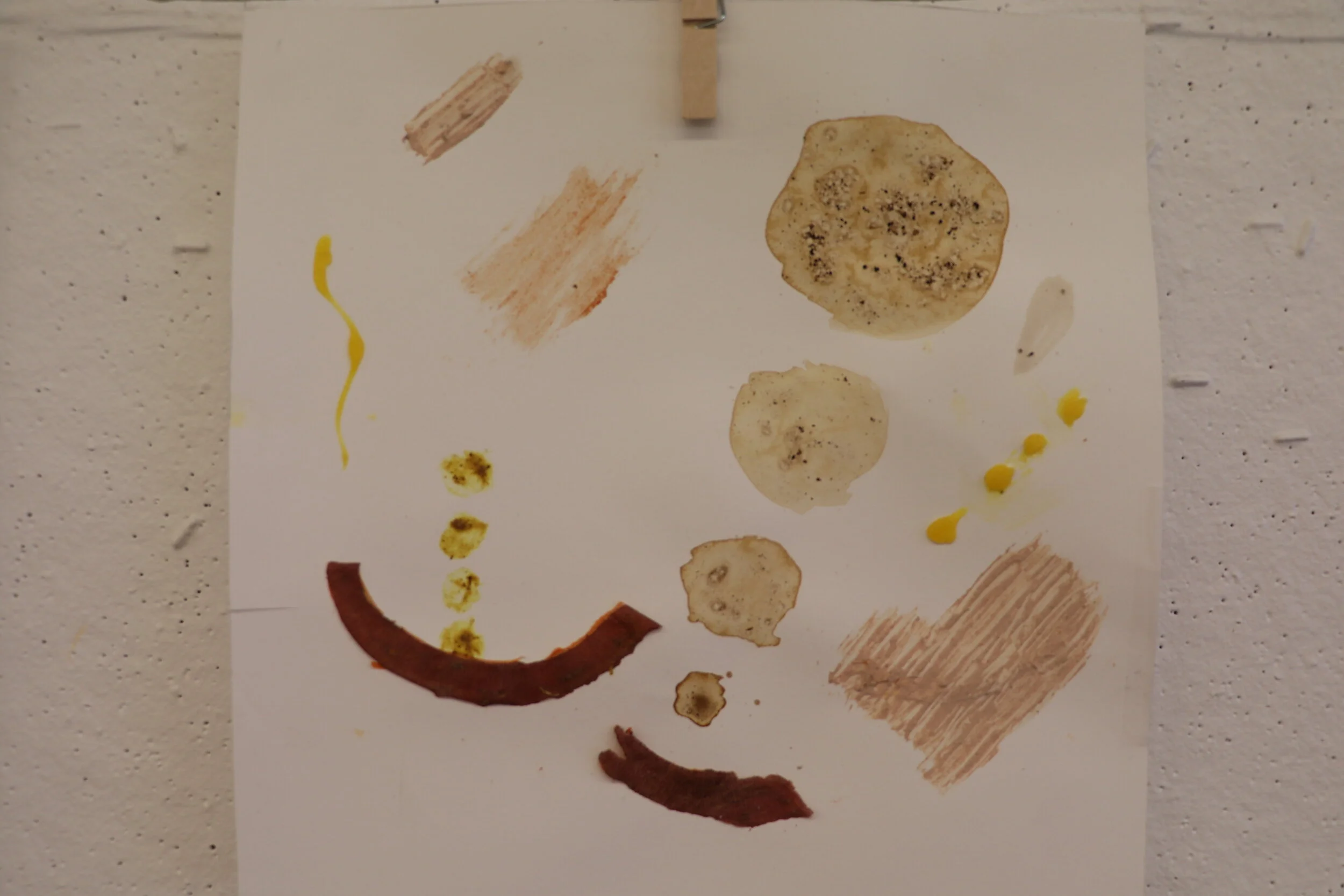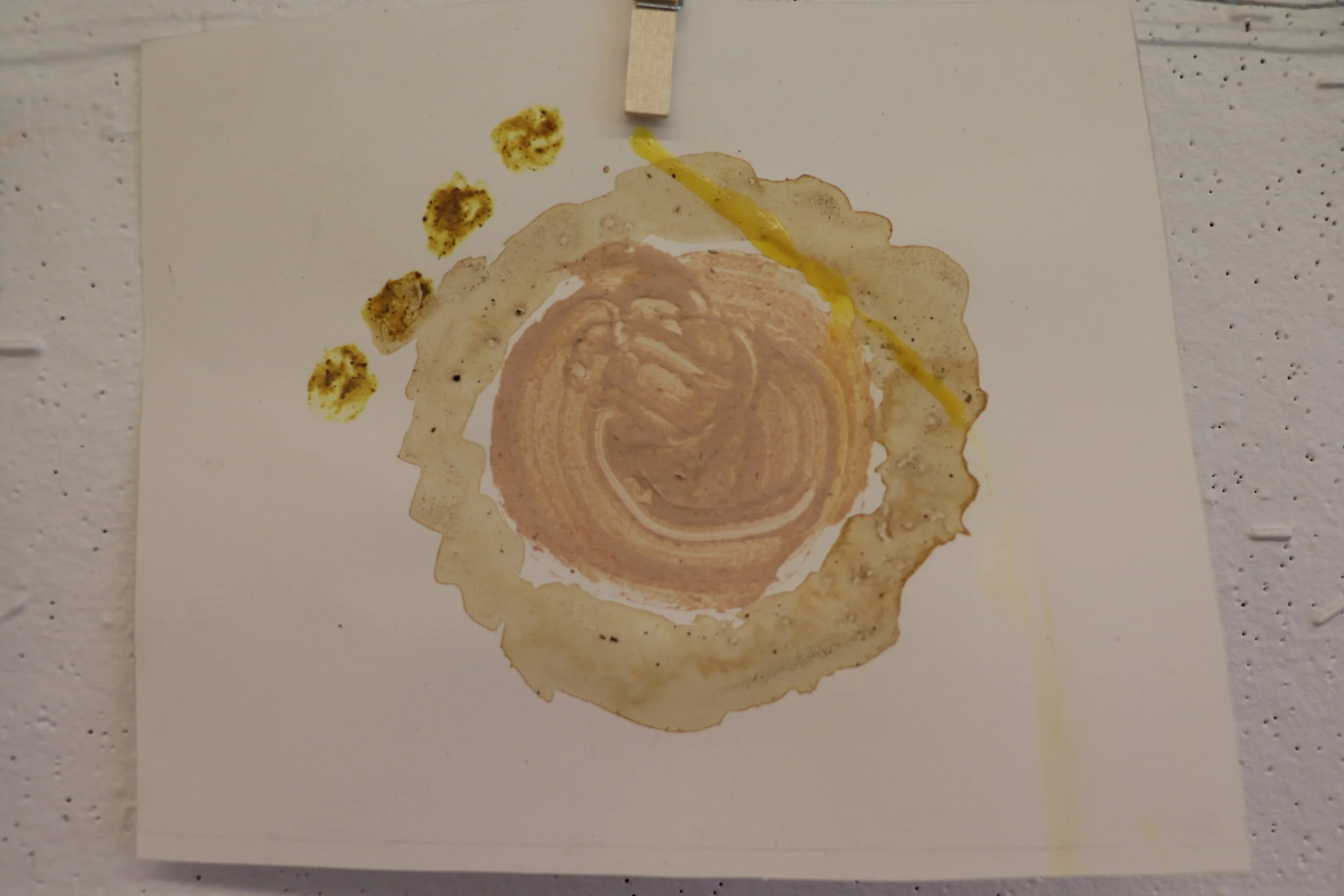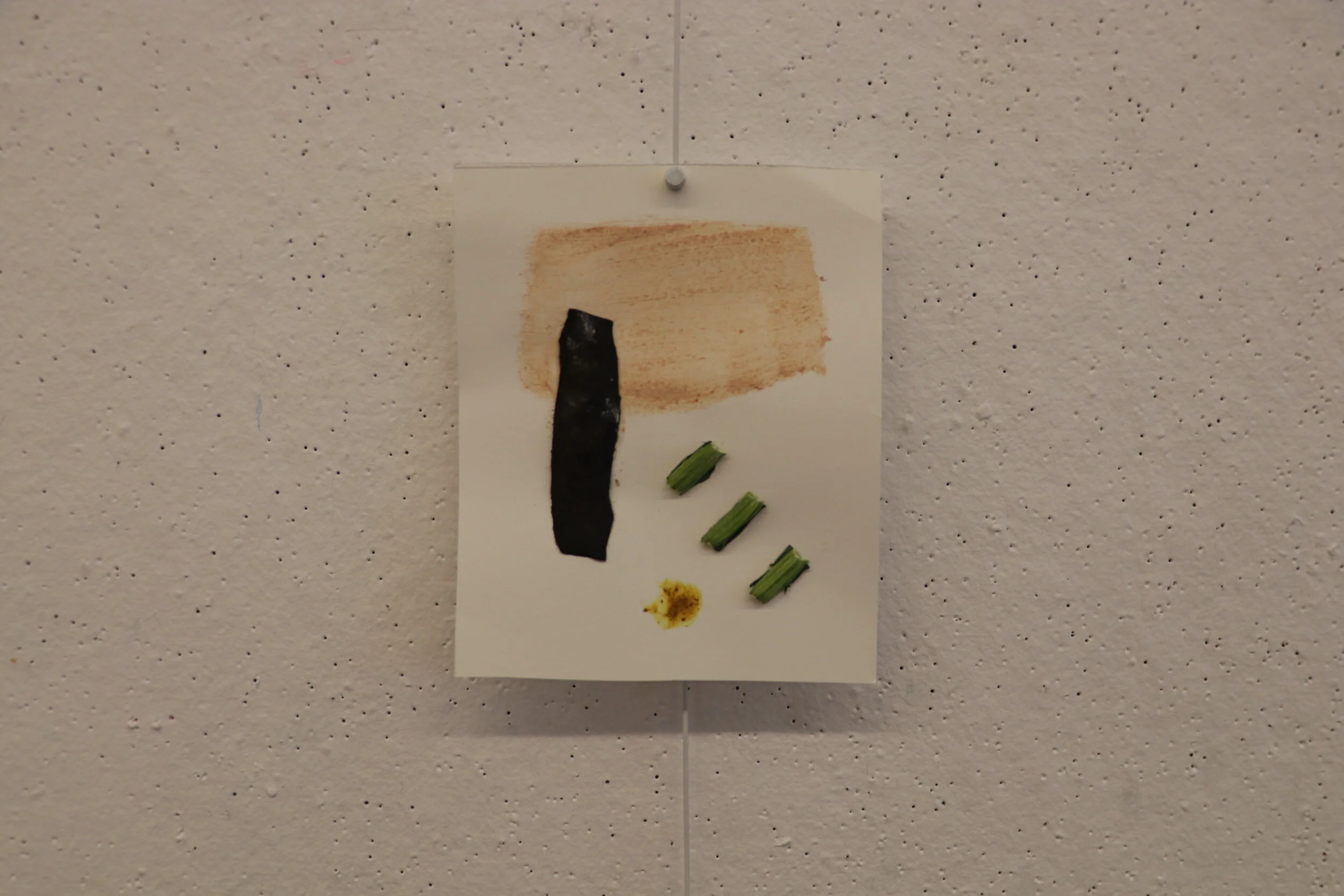Food, 2019
Food scraps and glue on paper
***
In the US, one third of the food produced goes to waste every year*. This amounts to around 130 billion pounds and 160 billion dollars worth of food. Imagine what this money could be used for, if we didn’t waste so much. Moreover, it is estimated that we already produce enough food to feed two and half planets. The problem around food waste is thus one of mismanagement. Mismanagement in the way food is produced, transported, distributed, sold, consumed - or disposed of. Mismanagement in the way it is prepared, stored, eaten, and even treated. Food waste is not just an ethical issue; it is an environmental, economic, and social one too. So how can we help solve this issue?
I believe we need to change the way we perceive food, in addition to how we handle it. There are for instance, many food items that people throw away thinking that are inedible or unusable when in fact, these are ripe with opportunity. While the more obvious solution is to make food out of food scraps, I decided to expand the pool of solutions by exploring what it would be like to use food as a foundation for art?
After all, food is a means of expression – of your culture, your identity, your personality, your emotions – just like art. Why not bridge these two disciplines together into an intriguing multi-sensory experience? Yes, you can play with your food. And hopefully make a difference too.
This piece is thus an expression of my interest in using food as an artistic medium.
What is food waste? According to the USDA, it is the decrease in the quantity or quality of food resulting from decisions and actions by retailers, food service providers and consumers. It occurs in the producing, processing, distributing, selling, preparing, and consuming stages, making it a far-reaching problem that makes both sides of the equation – supplier and demander – culpable. Examples of food waste include removing food that is not considered “optimal” to sell – such as oddly shaped fruits and veggies – from the supply chain, discarding food that is past the sell-by date, forgetting leftovers or worse directly throwing away excess food, and discarding parts of foods that are commonly considered inedible.
According to the report from Champions 12.3 entitled The Business Case for Reducing Food Loss and Waste: Restaurants, “key strategies for achieving food waste reduction [in restaurants] were to measure the food waste, engage staff, reduce food overproduction, rethink inventory and purchasing practices, and repurpose excess food.” While this report specifically referred to restaurants, similar food wast prevention methods can be applied in our homes. It is about changing our habits and how we think about food.
Thus, I ask: why not elevate food waste? And more, why not use it to make art? Why not make something beautiful, whimsical, intriguing out of something that is discarded, vilified and frowned upon? Ultimately, this project is an expression of my passion for food and cooking, as well as for defending the cause of limiting food waste. Food is precious, yet we treat it as if we had an endless supply of it, and with little regard for how it came to be. The works that compose this project are my attempts at exploring a new dynamic with food – one in which we covet it and treat it with care.
I have always tried to see the innate beauty of foods, which is why I chose to create abstract works. I felt that this way, I could place emphasis on the visual and textural qualities of food – what my drawing teacher would say is the form – rather than the fact that it is food. I did not want people to see these works and think it is food. This is not “food art”; it is the personal expression of the aesthetics that I am attracted to – abstractionism and minimalism – woven into a call for awareness. In determining the composition of these pieces, I was inspired by the work of Alinea, a michelin starred restaurant in Chicago which curates multi-sensory dining experiences using molecular gastronomy. Restaurants like this one really treat the food with respect, and are not limited by conventional ways of presenting food. They dabble in the realms of science, art, and psychology to create multi-dimensional works. The result is art on a plate – or sometimes, directly on a table.
With sustainability in mind, I vowed to not purchase any materials to create this project and used only food scraps that I kept from the result of my cooking. The only traditional “art” materials I used were paper, glue, gesso primer, and a matte spray finish – all of which I already from other projects. I chose to make these on white paper, firstly because it is what I had available, but also because I felt the white would not detract attention from the content and it reinforced the airy and minimalist aesthetic I was going for. In the end, I used banana peels, lemon skins and seeds, kale stems, egg yolk, mustard, coffee grounds with water, parsley, sweet potato and squash skins, and tomato paste that I mixed with gesso. I finished them off with the matte spray finish so that the scraps would not rot.
Here are some sketches which informed some of the pieces. I had to experiment with different ways of applying the scraps – for example I tried to mix the leftover coffee grounds with gesso to see if they would stick more, but ultimately went with just glue and also using the water they were diluted in.
Ultimately, I myself cannot solve the issue of food waste. But I can certainly be a part of the solution, and I believe that by taking action at a small scale, we can make large-scale change. The hope is that one person’s change in perception and habit will invite others to do the same. The goal is not to get everyone to make artworks out of leftover kale stems. It is simply to get people to think differently about food and observe it through a more sustainable lens. To have awareness about where their food comes from, how it is treated, and discarded. If we can look past imperfections, and really see the true value in food, then perhaps next time, we’ll think twice about not finishing that plate or throwing away those kale stems.
Below are sketches and pictures of the final works.














